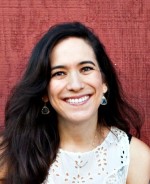- Calls to this hotline are currently being directed to Within Health, Fay or Eating Disorder Solutions
- Representatives are standing by 24/7 to help answer your questions
- All calls are confidential and HIPAA compliant
- There is no obligation or cost to call
- Eating Disorder Hope does not receive any commissions or fees dependent upon which provider you select
- Additional treatment providers are located on our directory or samhsa.gov
Learning Portion Sizes in Binge Eating Disorder Recovery

Contributor: Crystal Karges, MS, RDN, IBCLC Special Projects Coordinator at Eating Disorder Hope/Addiction Hope
Title:
Binge eating disorder, as with any other type of eating disorder, often creates a sense of chaos in terms of the relationship with food and body. Many individuals who struggle with these mental illnesses often lose sight of what is normal for their own body, or how to eat according to their own hunger and fullness signals.
The act of repeatedly eating beyond a point of natural fullness or consuming an amount of food that is abnormally large for one sitting can make it challenging to relearn nutrition basics in the recovery process.
One important thing to consider in recovery from binge eating disorder is that this illness is not just about food or simply learning to “fix” food habits that are abnormal. There are many factors that are connected to and underlying with binge eating disorder, and working with a cohesive treatment team can help ensure that the many layers of this mental illness are properly addressed.
An individual with binge eating disorder does not choose to binge over and over again for no reason at all. Similarly, the chaos that is often observed with eating behaviors seen in binge eating disorder are often mirroring deeper, emotional issues that are overwhelming and difficult to process.
Meal Portions for BED
For these reasons, collaborative care is imperative for recovery and healing. As a person begins to address the emotional and psychological components of the eating disorder, it will be easier to work through related food and eating behaviors.
 A therapist can help a person work on the emotional aspect of healing, while a registered dietitian can help guide an individual through nutritional healing and restoration.
A therapist can help a person work on the emotional aspect of healing, while a registered dietitian can help guide an individual through nutritional healing and restoration.
Learning portion sizes that are appropriate for a person’s body type may seem overwhelming initially, but with practice, this basic part of nutrition can be integrated into daily life.
A dietitian may recommended different tools or suggestions for help in this area, such as a plate or portioning guide or visual models that can help demonstrate what a serving of a certain food item should look like.
Working with a professional through the treatment process can help a person more effectively address the many different components associated with binge eating disorder.
Community Discussion – Share your thoughts here!
Are you in recovery from binge eating disorder? If so, what tools or resources were helpful for you in learning normal eating patterns and portions once again? What encouragement might you share with another individual who is just starting this part of their recovery journey?

Crystal Karges
Crystal is a Masters-level Registered Dietitian Nutritionist (RDN) with a specialty focus in eating disorders, maternal/child health and wellness, and intuitive eating. Combining clinical experience with a love of social media and writing, Crystal serves as the Special Projects Coordinator for Eating Disorder Hope/Addiction Hope, where her passion to help others find recovery and healing is integrated into each part of her work.
As a Certified Intuitive Eating Counselor, Crystal has dedicated her career to helping others establish a healthy relationship with food and body through her work with EDH/AH and nutrition private practice.
The opinions and views of our guest contributors are shared to provide a broad perspective of eating disorders. These are not necessarily the views of Eating Disorder Hope, but an effort to offer discussion of various issues by different concerned individuals.
We at Eating Disorder Hope understand that eating disorders result from a combination of environmental and genetic factors. If you or a loved one are suffering from an eating disorder, please know that there is hope for you, and seek immediate professional help.
Last Updated & Reviewed By: Jacquelyn Ekern, MS, LPC on November 2, 2015
Published on EatingDisorderHope.com

The EatingDisorderHope.com editorial team comprises experienced writers, editors, and medical reviewers specializing in eating disorders, treatment, and mental and behavioral health.

